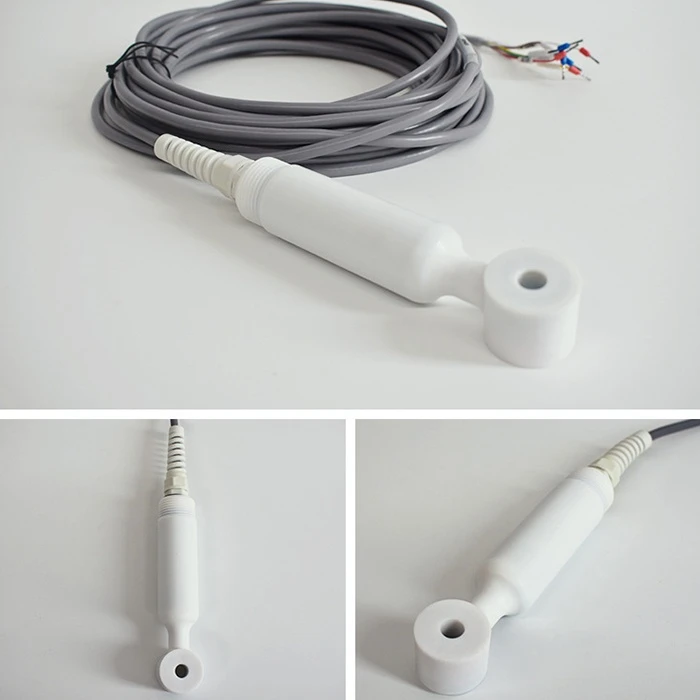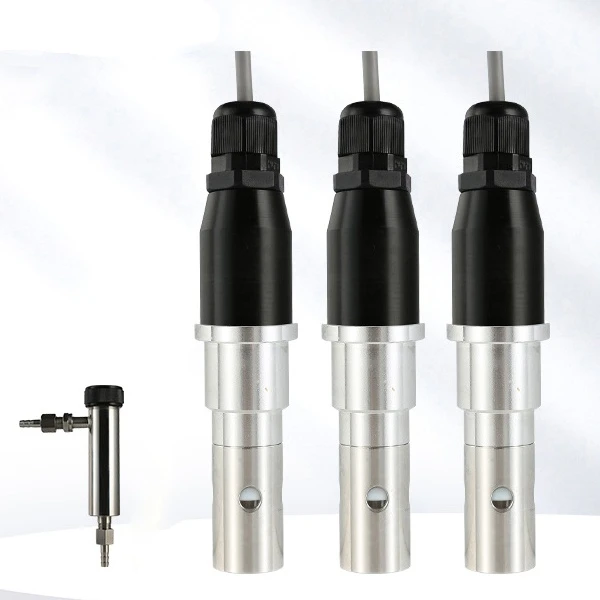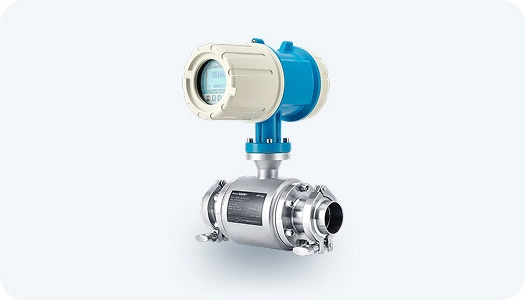-
Date:2025-11-13
-
Page View:17
A conductivity sensor is an instrument used to measure the electrical conductivity of a liquid. It is widely applied in water quality monitoring, environmental testing, and the chemical industry. Conductivity is an important indicator that reflects the concentration of dissolved salts in water. It directly affects the effectiveness of industrial water treatment, environmental protection, and product quality control.
Core Components of a Conductivity Sensor
A conductivity sensor mainly consists of the following parts: electrodes, sensor housing, transmitter, and connector.
1. Electrodes
The electrodes are the core components of a conductivity sensor and are responsible for performing the actual measurement. They are typically made of highly conductive materials such as stainless steel, platinum, or gold-plated metals.
The electrodes conduct current through the liquid to measure its conductivity. The number and configuration of electrodes affect measurement accuracy — the most common designs are two-electrode and four-electrode systems.
In a four-electrode system, two electrodes carry the current, while the other two measure voltage. This design effectively reduces errors caused by electrode surface fouling, providing more accurate and stable conductivity readings.
2. Sensor Housing
The housing protects the electrodes and internal components from external damage and environmental interference. It is usually made from corrosion-resistant, high-temperature, and pressure-resistant materials such as PVC, PVDF, or stainless steel.
A durable housing ensures long-term stability in harsh environments, which is especially critical for industrial and environmental monitoring applications.
3. Transmitter (Converter)
The transmitter converts the electrical signal collected by the electrodes into a digital signal for processing and output. It translates the variations in electrical current into conductivity values and uses internal algorithms for data correction and calibration, providing accurate and standardized readings.
A high-quality transmitter enhances measurement precision and minimizes the effects of environmental fluctuations, ensuring reliable performance under diverse conditions.
4. Connector
The connector serves as the interface between the conductivity sensor and external devices such as data loggers, controllers, or monitoring systems.
Its design ensures stable signal transmission and prevents damage from environmental factors such as moisture or corrosive gases. Most connectors feature waterproof designs, ensuring reliable operation even in wet or submerged conditions without signal loss or poor contact.

conductivity sensor

conductivity transmitter
Applications of Conductivity Sensors
In the food and beverage industry, conductivity sensors are used to monitor the purity and quality of products. For example, conductivity measurement helps detect impurities and contaminants in water, such as salts, minerals, and microorganisms.
In the pharmaceutical industry, conductivity sensors are used to monitor production processes to ensure product quality, consistency, and safety.
In the chemical industry, these sensors are used to track and control chemical reactions, ensuring that processes proceed correctly and safely.
In the power industry, conductivity sensors are applied to monitor the quality and performance of transformer oil. The conductivity of transformer oil reflects the presence of moisture and impurities, helping determine whether the oil needs replacement or treatment. Additionally, sensors are used to monitor the conductivity of cooling liquids in power equipment to ensure the normal operation of cooling systems.
In the environmental protection sector, conductivity sensors are essential for water quality monitoring and wastewater treatment. Conductivity measurements can detect heavy metal ions, organic pollutants, and other harmful substances in water. During wastewater treatment, changes in conductivity can reflect the treatment efficiency, helping optimize the purification process.
As a powerful water quality monitoring instrument, a conductivity sensor integrates multiple functions — including conductivity measurement, temperature compensation, signal conversion and output, high sensitivity, stability, and strong anti-interference capability.
Its wide range of applications in water quality monitoring, environmental testing, industrial process control, and scientific research provides critical data support for environmental protection, industrial production, and scientific advancement.










